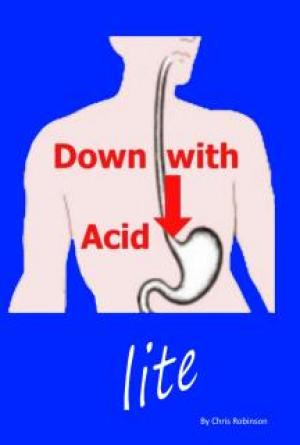Part-IV: Treatment Options
20. How is Incontinence Diagnosed?
Incontinence problems need proper diagnosis and proper treatment. The
process of diagnosis involves-
Physical examination- Normally pelvic examination in women, genital
examination in men, and abdominal and rectal examination helps in detecting incontinence. Pelvic examination in women highlights any projections or extensions of the urethra or bladder into the vaginal space.
Urinary stress test detects stress incontinence. You need to cough in a standing position with a full bladder.
Urine culture or urinalysis detects any infections in your urine or urinary tract.
Untreated urinary infections could develop into major diseases.
An ultrasound test of your pelvic and abdominal region detects incontinence.
Post-void residual test detects amount of urine left in your bladder after urination. It is normal to have a residue of less than seven ounces.
Pad test involves weighing a sanitary pad, and then exercising with it. After your exercise, weighing the pad detects any loss of urine.
Specific x-rays with contrast dyes for bladder and kidneys highlight their contents and deficiencies.
Copyright 2005 All rights reserved
- 70 -
“Understanding INCONTINENCE’ by G. Fairweather
Page 71 of 94
A urinary diary records the number of urinations and leakages within twenty-four hours.
A cystoscopy test reveals the entire inside of your urinary bladder.
Urodynamic tests detect urinary pressure and flow .
In rare cases, electromyogram shows muscular activity of pelvic floor and urethra.
Q-tip test shows angular changes of the urethra while at rest and during straining. If the change in angle is more than thirty degrees, your urinary muscles and tissues are weak. You need to lie down keeping your legs apart. A cough may produce slight urine leakages through the urethra. In other cases, you could stand with one of your legs on a stool. When you cough with a paper towel over your perineum, there could be a slight stain of urine on the paper.
Similarly, this test is possible by placing a lubricated cotton-covered stick into your urethra. Coughing or similar straining raises the stick to more than thirty degrees from the original angle. This test can detect stress incontinence and other incontinence due to lack of proper functioning of urethral sphincter muscles.
Vaginal childbirths could lead to stress incontinence. This is normally common in women who have more vaginal childbirths.
Menopausal women experience incontinence due to sagging of the abdominal muscles.
External insertion of catheters detects pressure levels in your urinary bladder.
This helps in detecting incontinence problems.
Copyright 2005 All rights reserved
- 71 -
“Understanding INCONTINENCE’ by G. Fairweather
Page 72 of 94
A cystometrogram monitors your urinary bladder contractions. Cystometric capacity of more than five ounces will erase doubts about stress or urge incontinence.
Sometimes women experience both stress and urge incontinence together. A diagnosis of incontinence necessitates proper medical treatment. Otherwise, instances of skin irritation and rashes in the perineum region are common.
===\\\===\\\===\\\===\\\===\\\===\\\===
Copyright 2005 All rights reserved
- 72 -
“Understanding INCONTINENCE’ by G. Fairweather
Page 73 of 94
21. How is Incontinence Treated?
There are both non-surgical and surgical remedies. Surgeries produce higher degrees of success but non-surgical remedies are preferred among most
incontinent patients. Such non-surgical remedies could be exercises for pelvic floor muscles, medications, changes in your behavior, and many others. Both treatments have good levels of effectiveness, which are dependent on every individual’s personal medical problems and condition.
Non-Surgical Remedies
Medications
These medications treat stress incontinence by increasing urethral muscular contractions. Patients with mild to moderate incontinence problems find good relief from such medications. Such medications could be -
You could take 25-72 mg of phenylpropanolamine, tricyclic antidepressant imipramine, and pseudoephedrine. Such alpha adenergic agents relieve
problems of incontinence. However, it has many side effects like headache and anorexia. This is not suitable for hypertension patients.
Estrogen replacement therapy is effective for women with incontinence. This removes burning sensations, urinary frequencies and urgencies. Regular usage of vaginal estrogen cream works very well for menopausal women as it
increases functioning of urethral sphincter muscles. However, women with breast and endometrial carcinoma need to take a doctor’s special advice before using such cream.
Copyright 2005 All rights reserved
- 73 -
“Understanding INCONTINENCE’ by G. Fairweather
Page 74 of 94
Pelvic Floor Exercises
Such exercises are Kegel exercises and you need to adhere to a regular training regime to achieve results. These exercises energize muscles supporting the urethra and bladder neck. They strengthen pelvic floor muscles and urethral sphincter muscles.
You can check the effectiveness of your exercises through biofeedback
techniques and various electrical stimulations. A vaginal or anal probe works with a slight electric current to identify the correct muscles for exercising. You can sit on a special electromagnetic field chair, which exercises your pelvic muscles also.
Collagen Injections
Collagen is a costly injection. Periurethral collagen injections need local anesthesia. Such injections relieve stress incontinence in both men and women by improving functioning of urethral sphincter muscles. You need to take such injections every few months to get total control over your bladder movements.
A few complications due to such injections are retention of urine, infections, and temporary erectile dysfunction in men. The success rate of such injections is higher in women than in men. Normally you need to test your skin for any adverse reaction to collagen before going in for such injections.
Detrusor Instability
This situation finds simple solutions in tricyclic antidepressants, musculotropic relaxants, calcium antagonists, and anticholinergics. These medications have minimum side effects and produce good relief from incontinence problems. In a few cases, you need to undergo special bladder augmentation or ablation of urinary bladder nerves.
Copyright 2005 All rights reserved
- 74 -
“Understanding INCONTINENCE’ by G. Fairweather
Page 75 of 94
Behavior Modification
Simple changes in behavior bring about radical changes in incontinence problems. Some of you need to monitor or retrain your bladder and its
functions. Ordinary persons with proper mobility and a normal nervous system can do this easily. In case you have any nervous disorders or other imparity in functioning, you need to practice prompted and timed voiding.
You could use a bedside commode for urinations at night. It is better to avoid urinary bladder irritants like caffeine, soda, and alcohol. You could also cut down on your intake of water and other fluids and specific vegetables and fruits to reduce incontinence. Other dietary and medical control helps constipation and solves incontinence. Some urinate often to prevent minor leakages.
Obese people need to lessen their weight to control incontinence. Some of you could also reduce heavy physical activities like jumping and running to reduce abdominal pressure.
For better safety, you could use pads, absorbent sheets, urethral plug, pessary, external devices, and specific undergarments.
Irritative Voiding Syndrome
Such syndromes find solutions in massaging and dilatation, usage of
antidepressants and other changes in your behavioral patterns.
Surgery
Normally surgical measures for curing incontinence problems are a last resort.
You need to be fully aware of specific risks and benefits due to surgery. With Copyright 2005 All rights reserved
- 75 -
“Understanding INCONTINENCE’ by G. Fairweather
Page 76 of 94
surgery you are able to better support your bladder, urethral sphincter muscles, and urethra.
Anterior Vaginal Repair
Folding and stitching of tissue between the vagina and bladder brings back the urethra and bladder to their original position. This helps women whose bladders prolapse into the vaginal wall. Such stitching is through a cut in your vagina or abdomen. In a paravaginal repair, stitching of pubocervical tissue supports pelvic floor muscles, urethra, and bladder. Normally these surgeries join retropubic suspension for effective remedy for stress incontinence.
Needle Bladder Neck Suspension
Special instruments cut through your abdomen to repair bladder and urethral malfunctioning. Such surgeries have complications of infections and
difficulties in urinating.
Retropubic Suspension
This helps to elevate your urinary bladder, urethra, and pelvic regions through abdominal cuts. Different procedures work on different systems like Burch colposuspension and Marshall-Marchetti-Krantz. Sometimes you could
develop complications of infections, urinary disabilities, and urge
incontinence.
Sling Procedure
This helps incontinence in women. It helps to strengthen the urethral sphincter muscles and prevent urinary leakages during any stress. Some complications could be infection, retention of urine, and formation of abscess.
Copyright 2005 All rights reserved
- 76 -
“Understanding INCONTINENCE’ by G. Fairweather
Page 77 of 94
Treatments for incontinence could have certain psychological and
physiological complications. You could have vaginal discharge, odor, or other minor problems. Your doctor can offer the best advice to solve your problem.
===\\\===\\\===\\\===\\\===\\\===\\\===
Copyright 2005 All rights reserved
- 77 -
“Understanding INCONTINENCE’ by G. Fairweather
Page 78 of 94
22. Medications
Urinary incontinence is a common and chronic problem. At the same time, it is also expensive as medications and therapies for curing incontinence are soaring higher. Besides, such problems has a larger rate of incidence in women. Many women evade dealing with such incontinence problems. Hence, pharmaceutical companies introduce newer medications for treating such disorders.
Evaluation
Before starting on any medications, it is essential to evaluate your incontinence problems. Such evaluation is through three main steps. Initially, you can assess severity of your problem through a thorough physical examination, analysis of your urine, and a total history of your problem. This will identify the exact cause for your incontinence such as urinary infections, atrophic vaginitis, or others. Accordingly, you can undergo therapy or other treatments to cure your problem.
If you do not have any infections, then you need to look into proper
functioning of your urinary bladder. Sometimes improper contractions of the bladder retains some urine in your bladder, which overflows with exertion.
You can measure such overflowing of the bladder through ultrasonography.
Normally, less than fifty ml of urine can remain in your bladder after urination.
If there is more than 200 ml of urine after urination, then you have problem of overflow bladder.
If you do not have any of the above symptoms, you need to check yourself for urge or stress incontinence. Stress incontinence is due to malfunctioning of the Copyright 2005 All rights reserved
- 78 -
“Understanding INCONTINENCE’ by G. Fairweather
Page 79 of 94
urethral sphincter muscles. Urge incontinence is due to uncontrollable contractions because of an overactive urinary bladder. You can determine such condition through a thorough check of your history, cotton-swab testing, cystometrography, pad testing, and Urodynamic testing. These also reveal the condition of your nerves like multiple sclerosis, or spinal cord injuries.
Treatments and Medications
Sometimes you could have both urge and stress incontinence. Hence, you need treatment or medication for the more predominant one to cure your ailment.
Urge incontinence responds to certain medications though therapy can be more effective. Such therapies are behavior control like bladder training or drill and Kegel exercises. Some medications like tolterodine (Detrol) and oxybutynin (Ditropan; Oxytrol), which are anticholinergic agents prove to be effective in treating such incontinence. These medications are available in both short and long oral forms and in patch forms. They also have few side-effects.
Transdermal oxybutynin is the newest medication for urge incontinence.
This is effective and has much reduced side effects. It relieves conditions of mild to moderate urge incontinence.
Electrical therapy is effective for those who do not respond to medications or therapy. Mild electric currents stimulate your sacral nerves through your lower back regions. Your nerves then start regular muscular contractions reducing problems of incontinence. These treatments are expensive but effective.
Stress incontinence is more common among women. You can treat yourself with urethral plugs, intravaginal support devices, pessaries, and collagen injections. They improve functioning of the urethra. Another therapy is an electromagnetic chair, which improves and strengthens pelvic floor muscles.
Copyright 2005 All rights reserved
- 79 -
“Understanding INCONTINENCE’ by G. Fairweather
Page 80 of 94
Alpha-adrenergic agonists stimulate normal functioning of the urethra.
Pseudoephedrine (Sudafed) and phenylpropanolamine are other effective
medications. Duloxetine is effective against depression as it increases levels of serotonin and norepinephrine in the spinal cord. This activates your nerves, which in turn activates the pudendal nerve. This nerve mainly controls functioning and contracting of urethral sphincter muscles. This solves problems of incontinence.
Duloxetine provides good relief from stress incontinence. However, the common side effect is nausea, which is the result of long-term usage of this medicine. Hence, this is useful for occasional problems of stress incontinence.
Estrogen and such replacement therapy are helpful for many incontinent women. Urinary antispasmodics reduce urinary urgencies and frequencies of urination. Vasopression increases the content of water in kidneys. This reduces instances of urinary disorders. Most medications for stress incontinence help to tighten the urethral sphincter muscles. Such tightening reduces leakages and resultant urinary incontinence.
Normally most of the patients prefer medications, therapy, and exercises to deal with their incontinence problems. Surgeries are always the last resort as they inadvertently lead to many more complications. Besides, medications provide much relief and pose fewer side-effects. Some surgeries lead to further surgeries for a total cure. You end spending more money for such surgeries.
Hence, medications, behavior therapy, and exercises provide long-term and sure relief from incontinence problems for men and women although it may take a longer time to be effective.
===\\\===\\\===\\\===\\\===\\\===\\\===
Copyright 2005 All rights reserved
- 80 -
“Understanding INCONTINENCE’ by G. Fairweather
Page 81 of 94
23. Surgical Treatments
All types of incontinence find solutions in surgical treatments. You can undergo surgery if no forms of treatment yields positive results. Most surgeries involve only small cuts and you are back to your work soon afterwards. Some surgical treatments for incontinence are-Support Sling: This popular surgery involves placing a support underneath the neck of your urinary bladder. The strip connects to the abdominal wall or pelvic bone through permanent fixtures. This support material is either some connective tissue from your body or from a cadaver. Such support enables your bladder to hold your urine. These surgeries could be Raz vaginal wall sling or pubovaginal sling, each offering a cure for stress incontinence.
Bladder neck suspension: A cut through your abdomen allows stitching tissues around the urethra. These stitches then attach around the muscles of your pubic bone. This stabilizes your urethra and is successful in curing stress incontinence largely. Such suspensions include Marshall-Marchetti-Krantz cystourethropexy, and Burch colposuspension.
Transvaginal needle suspensions: This is similar to bladder neck suspension.
Here urethral stitches are from the vaginal side and then a separate abdominal cut places these stitches in the abdomen. These stitches attach either to your pelvic bone or to abdominal wall. Such suspension treatments include Gittes, Raz, and Stamey procedures for curing incontinence problems.
Artificial sphincter: As the name suggests this is an artificial device. This device is common in cases of men with prostate surgery and supplements Copyright 2005 All rights reserved
- 81 -
“Understanding INCONTINENCE’ by G. Fairweather
Page 82 of 94
functioning of sphincter muscles. This device around your urethra does not allow urine to leak out. Instead, these devices contain fluids and are under your control. You close your sphincter cuff to store urine in your urinary bladder.
When you squeeze a pump in your scrotum, urine empties out of your bladder.
This is possible as the cuffs are devoid of fluids now. After urination, fluid by itself refills cuffs and your bladder is ready to store more urine.
Implantable electronic stimulator: This relatively new technique solves incontinency by stimulating your nerves. This treatment is very common for urge incontinence patients, who do not find relief in other medical treatments.
This pacemaker type of device is within your body. It gives mild electric currents to your sacral nerves, which are mainly responsible for your
incontinence. The current passes to your sacral bone to control the functioning of the pelvic floor muscles and bladder. These surgical treatments provide long-term relief. However, chances of recurrence and complications could be through infections, accidents injuring your bladder, retaining urine for long periods, and usage of catheters. Normally you could encounter certain specific complications after surgical treatments. These are urethral obstructions. Some of them are lack of total emptying of the bladder, irritation, urinary infections, problems with retention with urine, hesitancy for passage of urine, or a decrease in force of urine.
There is a cure for such urethral obstructions too. Urethrolysis cuts through such obstructions of fibrous tissue and fixes urethra to pubic bone. When this is through your vaginal slit, it is transvaginal urethrolysis. It helps in setting right many abnormalities of the vagina.
===\\\===\\\===\\\===\\\===\\\===\\\===
Copyright 2005 All rights reserved
- 82 -
“Understanding INCONTINENCE’ by G. Fairweather
Page 83 of 94
24. Complications of Surgery
Surgeries are normally the last resort for treating incontinence problems.
Sometimes specific surgeries cause incontinence, mainly due to damage to nerves and their consequent malfunctioning.
Pelvic surgery helps in curing problems of the female genital tract, removal of the uterus, intestinal cancer, hysterectomy for non-cancerous ailments, or stress urinary incontinence. However, such surgeries weaken pelvic floor muscles and at times even damage them. They are then unable to offer support to your urinary system and their organs. The urethra and bladder neck sag with little physical exertion and cause incontinence problems. This is a state of hyper mobility as your urethra is unable to handle abdominal pressure on your urinary bladder.
Sometimes incontinence problems arise due to operations, causing damage to your nerves in your urinary system. Your urinary bladder is no longer stable leading to detrusor instability. Your bladder pushes downwards. Otherwise the bladder neck or urethra functions abnormally, which now necessitates
additional surgeries.
A catheter is an artificial tube passing through the urethra into your bladder, which then takes out your urine through a bag outside your body.
Diabetes in advanced stages causes total loss of sensation in the urinary bladder. This is diabetes mellitus, which further leads to diabetic cystopathy.
This causes incontinence and needs the help of catheters.
===\\\===\\\===\\\===\\\===\\\===\\\===
Copyright 2005 All rights reserved
- 83 -
“Understanding INCONTINENCE’ by G. Fairweather
Page 84 of 94
Copyright 2005 All rights reserved
- 84 -
“Understanding INCONTINENCE’ by G. Fairweather
Page 85 of 94
25. Noninvasive Devices - Will They Work for You?
Incontinency problems are not acute in many people. They can use special garments or pads to gain support for problems of incontinency. For accidental leakages bed pads, full-length undergarments, liners like pads, shields, or inserts, disposable adult diapers, or a combination of pants and pads are useful.
These need your doctor’s approval first as improper usage could lead to bladder control problems and cause skin irritation, infections of the urinary tract, and other skin injuries.
Catheters are mainly for severe urge incontinence. This thin and flexible tube is in your urethra for few hours intermittently. This empties your bladder completely and you can carry on with your normal work. Risks of infection are few if you use sterilized catheters, wash before, and after catheterization in public toilets, carry a separate bag for antiseptic lotion, and another plastic bag to carry all of them.
Permanent catheterization is necessary for mentally and physically challenged people. Such a permanent catheter is in your bladder and an inflated cuff holds the tube. Urine collects into a device externally, which needs regular emptying.
There are risks for infection in such catheterization.
Condom Catheters are for full day usage in males with incontinency problems.
You can remove them at night. A pouch around the penis in male patients collects urine and empties into a bag, which attaches to your leg. You can empty the bag regularly. Urethral irritations are higher due to constant contact with urine.
Copyright 2005 All rights reserved
- 85 -
“Understanding INCONTINENCE’ by G. Fairweather
Page 86 of 94
Specific new devices offer modern solutions to incontinence in women. A urethral plug is for onetime usage. You place this in the urethra with the help of an applicator. A push fills air into a balloon, which holds the device. You pull a string to deflate balloon and remove plug when you want to urinate. You can then insert a new device. This however, carries a high risk of infection.
Miniguard patch is an external pad of foam. This fixes and fits the urethra opening and prevents leakage. You can remove this before urinating and fix another afterwards. All such devices are according to personal needs and comforts.
===\\\===\\\===\\\===\\\===\\\===\\\===
Copyright 2005 All rights reserved
- 86 -
“Understanding INCONTINENCE’ by G. Fairweather
Page 87 of 94
26. Overcoming Fecal Incontinence
Fecal incontinence is your inability to control passage of stool through your anus. This is a minor issue for some while for others it is total lack of control of bowel movements. This dire situation necessitates immediate treatment. It is common among elderly, normally over sixty-five and more so in women.
Many do not seek medical aid due to embarrassment.
Causes and symptoms
Ö Fecal incontinence is mainly due to anal injuries during vaginal
childbirths, nervous problems, and injuries to rectum or anus.
Ö Anal sphincter muscles encircle the anus and retain your stools within until time for defecation. These muscles could sustain injuries during vaginal childbirths and such women lose control over defecation.
Ö Infections in the anus and rectum from different diseases cause muscular damage. These anal muscles are unable to control your defecation.
Ö Old age weakens anal muscles causing such incontinence.
Ö Sometimes nervous problems like brain tumors, strokes, multiple
sclerosis, dementia, and mental disorders do not pass messages through your nerves to your excretory organs.
Ö Diabetes mellitus for long periods causes nerve damage leading to
incontinence.
Copyright 2005 All rights reserved
- 87 -







